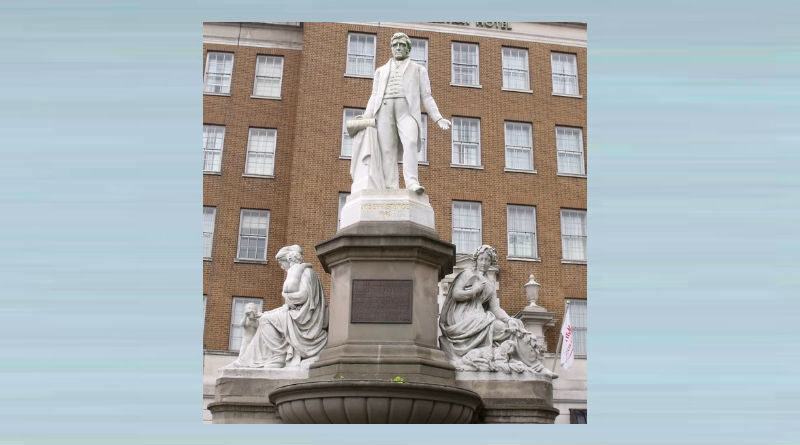36. Joseph Sturge Memorial
Updated on 2 March 2021
Joseph Sturge (1793 – 1859) was an English Quaker philanthropist who focused on the abolition of slavery and adult education.
Sturge was born in Gloucestershire, England, into a Quaker family of farmers. Aged 29, he moved to Birmingham and, together with his brother Charles, he built up a successful local business importing corn. He also invested in the burgeoning railway industry and became both a wealthy and influential man.
British and Foreign Anti-Slavery Society
Sturge, with fellow Quaker William Allen, founded British and Foreign Anti-Slavery Society (now known as Anti-slavery International) in 1839. The society argued for greater public agitation. “The people” Sturge championed, “must emancipate the slaves for the Government never will.”
He visited the West Indies in 1836/37. There he witnessed an apprenticeship scheme for recently freed slaves that was failing badly. He wrote about his findings in The West Indies in 1837. The book made a major impact on the public and, in 1840, new laws were introduced to improve the freed slaves’ apprenticeship scheme.
Sturge had been influenced by the early anti-slavery Quakers such as Benjamin Lay who believed all people were equal. In turn, Sturge’s efforts influenced both sides of the Atlantic into ending the Slave Trade.
Adult Education
In 1842, Joseph Sturge visited Nottingham, as he was the local parliamentary candidate at the time. Whilst there he visited arguably the word’s first school for adult education run by the Quaker Samuel Fox (1781 – 1868) and his staff.

Initially Fox’s classes were for young women from local lace and hosiery factories. William Singleton, a Methodist, originally started the school, but it was Fox and the staff from his grocer’s shop that maintained it.
Fox’s staff were expected to teach at this school and Fox provided breakfast at 9 am on a Sunday after they had completed two hours of teaching. The school grew to include men, but it was said that Fox was specifically interested in improving adult education.
The idea of a school that taught not only scripture, but also basic skills such as reading and writing was taken up by Sturge. In 1845, concerned by the behaviour of the men and teenage boys he saw in the city’s streets, Sturge invited some of Birmingham’s younger Quakers to meet in his house. There, he discussed establishing an adult school for young men.
From that meeting, the group of Birmingham Quakers that Sturge belonged to agreed that such a school should be established for:
“Those who are not & have not been in the way of receiving any instruction in other schools.”
Birmingham Quakers, 1845
Severn Street First Day School welcomed its first students on 12 October, 1845. Adults and teenagers were separated into two classes which followed the same format.
Writing was taught for the first hour, followed by a Bible reading from a teacher and a scholar and then time was spent on reading and spelling, with the last part of the lesson being reserved for the teacher to test the scholars.
Birmingham Friends opened another similar school three years later in 1848.
Together, these three English schools created adult education as we know it today.
The Memorial
Sturge died in Birmingham in 1859. Three years later his memorial was unveiled before a crowd of 12,000 people in 1862 at Five Ways, Birmingham, near his former home.
For the memorial, Sturge is in a teacher’s pose as if he were standing before a class, with his right hand resting on a Bible to indicate his faith. He wears a lapel-less coat of Quaker plain dress.
Lower on the plinth, he is flanked by two female allegorical figures. One represents Peace by holding a dove with an olive branch, with a lamb at her feet, symbolic of innocence. The other allegorical female represents Charity who is comforting two Afro-Caribbean infants, symbolic of the anti-slavery struggle.
In 2006-2007 the Birmingham Civic Society, Birmingham City Council, and the Sturge family restored the statue for the 200th anniversary of the Slave Trade Act of 1807. This included replacing a missing hand.
On 24 March 2007, the city held a civic ceremony to formally rededicate the statue, which has been Grade II listed since 1982.

The 37th of the Quakers in 50 Objects is a Cadburys Chocolate Bar
Image from /www.sanantoniopeace.center and commons.wikimedia.org/

